Explore the marine world
Green Turtles
(Chelonia mydas)
About
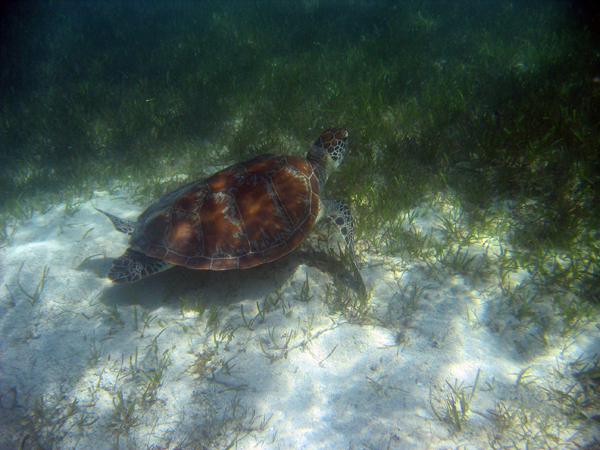
The Green turtle is commonly seen in seagrass meadows, feeding on seagrass and macroalgae.
Green turtle
Sea turtles are cold-blooded, air breathing, egg laying reptiles that deposit their eggs on dry, sandy beaches.
The Green turtle is named for the greenish colour of its fat, caused by its diet of seagrass. They have a smooth, high domed carapace (shell) with non-overlapping scutes. The carapace of a mature green turtle can grow to a length of more than 1m and weigh on average 150kg 1.
Hatchlings are shiny black above and white below, with white margins around the carapace and flippers. The average carapace length is about 5cm and each hatchling can weigh approximately 25g 1.
where
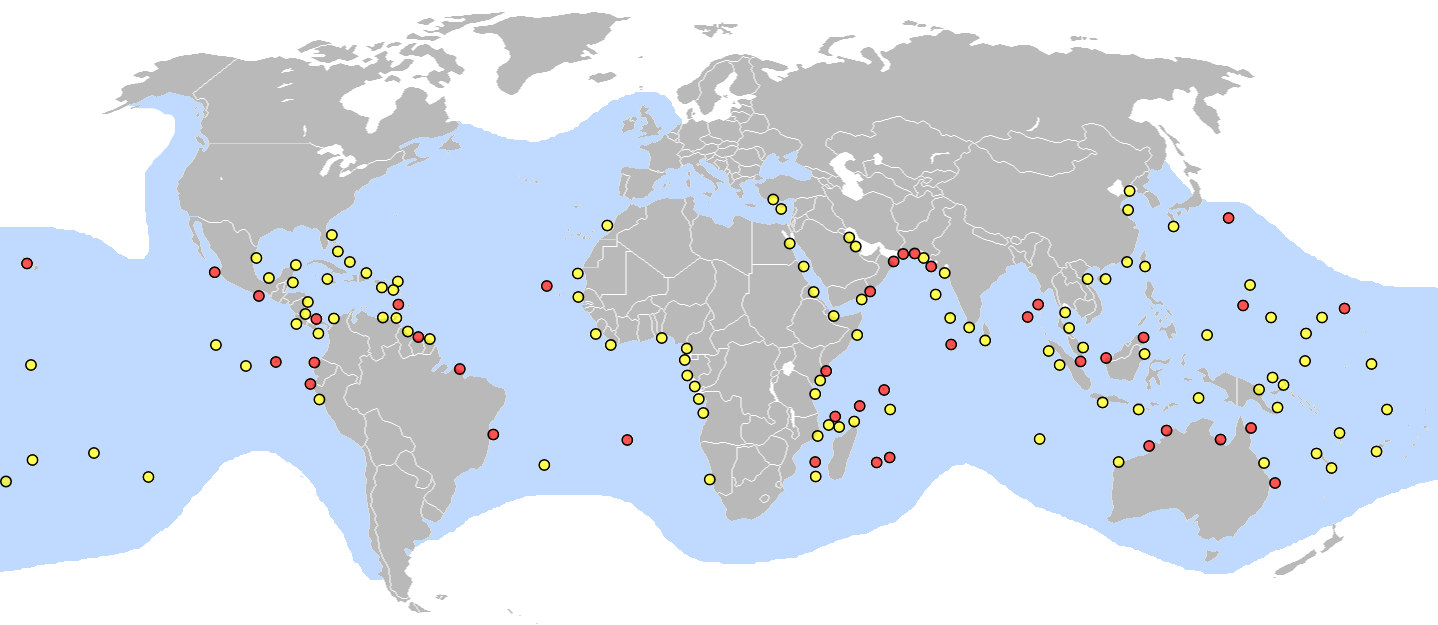
Nesting location of Green sea Turtle : red dot = major nesting locations, yellow dot=minor nesting locations3.
Where can you find Green Turtles
Green turtle (Chelonia mydas) are found mainly in tropical and subtropical waters and has the most numerous and widely dispersed nesting sites of the seven species of sea turtle globally2.
food
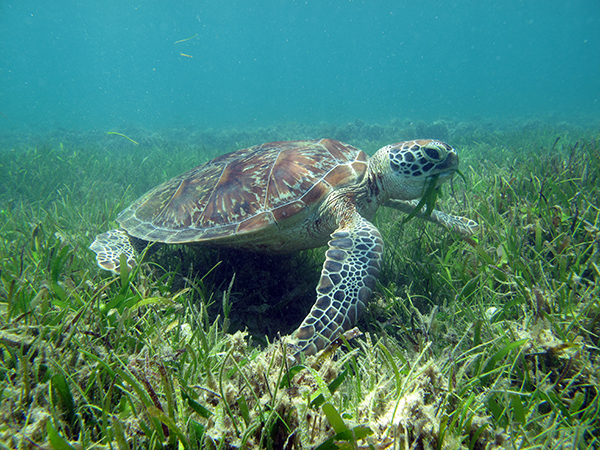
Green Turtle feeding on seagrass
What do Green Turtles eat?
The Green turtle is commonly seen in seagrass meadows, feeding on seagrass and macroalgae.
Green turtles display an ontogenetic shift in diet and habitat use during development. During their early life stage, juvenile green turtles in the southwestern Pacific inhabit the pelagic zone where they feed omnivorously on soft-bodied invertebrates such as jellies and jelly-like organisms. At approximately 44 cm CCL they recruit to inshore foraging habitats where they become primarily herbivorous2.
THREATS
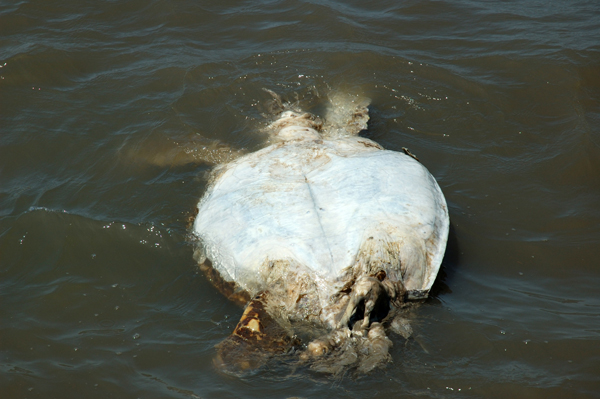
Dead Green Turtle off Cardwell (Far North QLD, AUSTRALIA) in 2011.
Are Green Turtles Threatened?
The Green Turtle was once highly sought after for its body fat a key ingredient in the popular delicacy, ‘green turtle soup.’ Although it has become illegal to trade them in many parts of the world, green turtles and their eggs continue to be consumed. Unfortunately, due to human pressures, most sea turtles today are either Endangered or Critically Endangered2.
The Green Sea Turtle is listed as endangered by the IUCN and CITES and is protected from exploitation in most countries.
More information
Species
Chelonia mydas
Distribution

Nesting location of Green sea Turtle : red dot = major nesting locations, yellow dot=minor nesting locations3.
Adult Carapace
up to 1 meter
Body Shape
The most distinctive feature of sea turtles is their shell. The top side of the shell is called the carapace and is actually the broadened, fused ribs of the turtle. Carapace shape depends on species, but ranges from oval to heart-shaped. Similarly, carapace colour depends on species, but can differ depending where the animal lives. The bottom side of the shell is called the plastron. The shell is covered by a layer of horny plates called scutes. The flippers (front and hind legs) are highly evolved and adapted for swimming. On each fore flipper are either one or two claws. Breeding turtles also have a tail which is longer in males than females.

Adult body mass
up to 150 kilograms
Body Colour
olive-green above, usually variegated with brown, reddish-brown and black. They are whitish or cream below.
Diving
Green turtles must surface to breathe. A dive duration largely depends on activity. A foraging sea turtle may spend approx. 5–40 minutes underwater. A sleeping sea turtle can remain submerged for 4–7 hours.
Reproduction
Time to reach sexual maturity varies greatly and where they live and their diet – green turtles take between 20 to 50 years. A female can produce between 50 and 200 eggs. Temperature during incubation determines the sex of the hatchling – if greater than the pivotal temperature then more hatchlings will be female and if lower more will be male. Eggs hatch at night, from early summer until late autumn, and the hatchlings head straight for the sea.
Sexual maturity
between 20 to 50 years.
Life Span
up to 70 years or more

Information Source
sources:
https://www.seagrasswatch.org/wp-content/uploads/Resources/Magazine/PDF/issue44/Seagrass-WatchNews_Issue44.pdf
https://environment.des.qld.gov.au/wildlife/animals/discovering-wildlife/turtle-watching/turtle-species/green-turtle
https://www.fisheries.noaa.gov/species/green-turtle
https://en.wikipedia.org/wiki/Green_sea_turtle
More INFO
Seagrass-Watch Issue 44 : Sea Turtles – November 2011
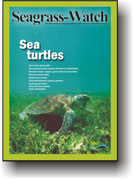
Green turtle dietary shift, QLD, Australia | Turtle grazing & seagrass eutrophication tolerance, Indonesia | Marine Illegal Marine Turtle Trade, Bangladesh | Halophila beccarii, Singapore | Seagrass, Green Turtles & Conservation, Bermuda | Villagers protecting seagrass, Thailand | Tracking turtles, QLD, Australia | Seagrass monitoring, Turks & Caicos Islands, Caribbean | Turtle rehabilitation, QLD, Australia | Fibropapilloma | Sea turtle facts 32pp.( 21 mb)
Seagrass-Watch Issue 44 : Sea Turtles – November 2011
